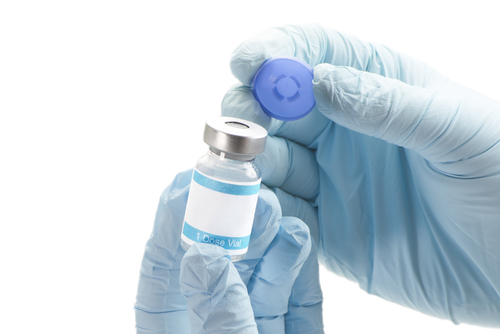ERT vs. SRT – Which Could Be More Effective for Pompe Disease?

Pompe disease is a rare inherited disease characterized by the abnormal buildup of a type of sugar called glycogen within the cells and tissues of the body. Glycogen accumulation occurs due to mutations in the GAA gene that provides instructions for making an enzyme called alpha-glucosidase (GAA), which is responsible for breaking down glycogen.
Enzyme replacement therapy (ERT) is the first-line treatment for Pompe disease, but substrate reduction therapy (SRT) has shown promise in preclinical studies. Here are some pointers on what ERT and SRT are all about.
What is ERT?
ERT is a treatment that replaces a deficient enzyme, which, in the case of Pompe disease, is GAA. The ERT that is approved for Pompe disease is Lumizyme. It consists of a genetically engineered enzyme that can replace natural GAA.
Although ERT has been shown to enhance survival, it is not a cure for Pompe disease and needs to be administered throughout a patient’s life.
What is SRT?
Unlike ERT, which replaces the deficient enzyme, SRT is intended to decrease the amount of the enzyme’s substrate or the molecule on which the enzyme acts, which is glycogen in Pompe disease. In this way, the lack of natural enzyme becomes less of a problem.
SRT has received approval or is in clinical trials for the treatment of other lysosomal storage disorders such as Gaucher disease and Fabry disease. For Pompe disease, several SRT approaches are currently being evaluated in preclinical studies.
Does ERT have any limitations?
Since ERT is a protein injected into the bloodstream, the body’s immune system may recognize it as foreign and mount an immune response against it, thereby reducing its effectiveness. In rare cases, the immune response can be so strong, it can lead to anaphylaxis, a life-threatening allergic reaction.
While Pompe disease symptoms are mostly seen in the muscular system and organs such as the heart and kidneys, there is increasing evidence that the brain and spinal cord are involved as well. ERT cannot help alleviate these symptoms as the enzyme cannot cross the blood-brain barrier.
Could SRT help overcome the limitations of ERT?
SRT does not introduce any foreign proteins into the body so the chances of the body mounting an immune response are very low. Moreover, SRT can be taken orally instead of as an injection, which minimizes the chance of any injection site-specific reactions. Because SRT is a small-molecule therapy, it can easily cross the blood-brain barrier and help ease the neurological symptoms of Pompe disease.
However, a proper evaluation must be done before considering SRT for any condition as it can interact with other biomolecules in organs such as the kidneys, heart, and digestive system and cause side effects.
Which therapy would be more effective?
At the moment, only ERT is available for patients with Pompe disease. However, as future SRT options are developed, it may be possible to do a thorough comparative evaluation between ERT and SRT. This will give patients and clinicians the possibility of choosing between multiple therapy options. It may also be possible to combine both therapies to obtain a better response to treatment.
For now, Pompe disease patients can enhance the efficacy of ERT by following a good diet and supplementing it with aerobic exercise to boost metabolism. The possibility of allergic reactions can be largely mitigated by administering immunosuppressants.
Last updated: Jan. 9, 2020
***
Pompe Disease News is strictly a news and information website about the disease. It does not provide medical advice, diagnosis or treatment. This content is not intended to be a substitute for professional medical advice, diagnosis, or treatment. Always seek the advice of your physician or other qualified health provider with any questions you may have regarding a medical condition. Never disregard professional medical advice or delay in seeking it because of something you have read on this website.






